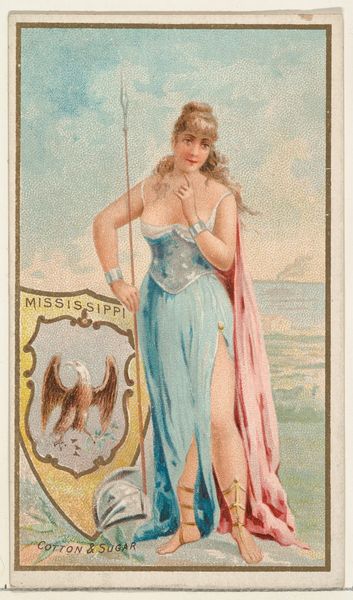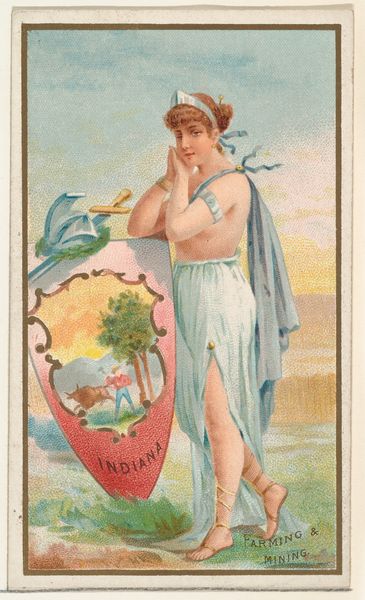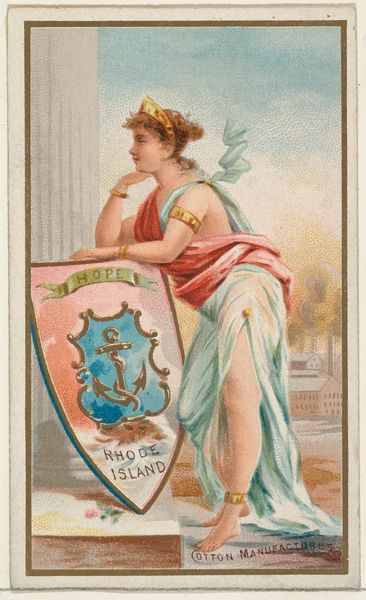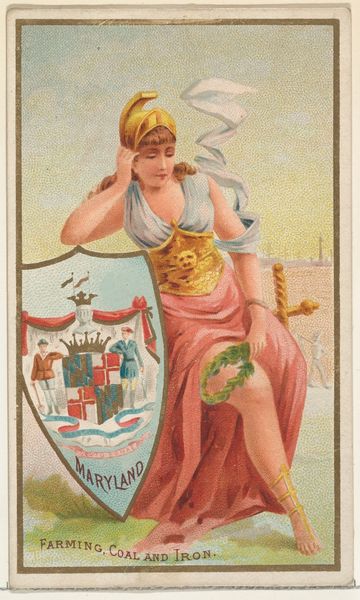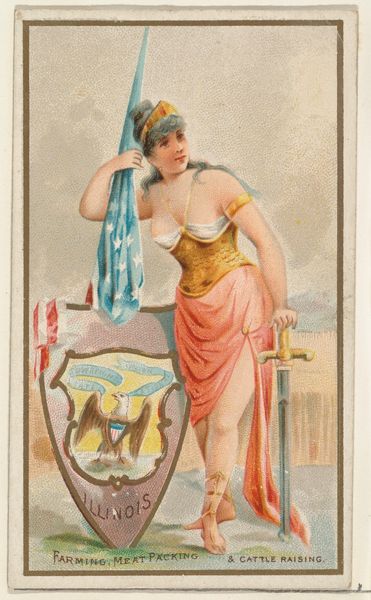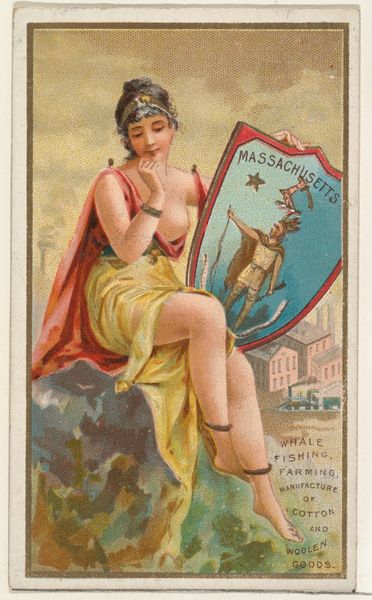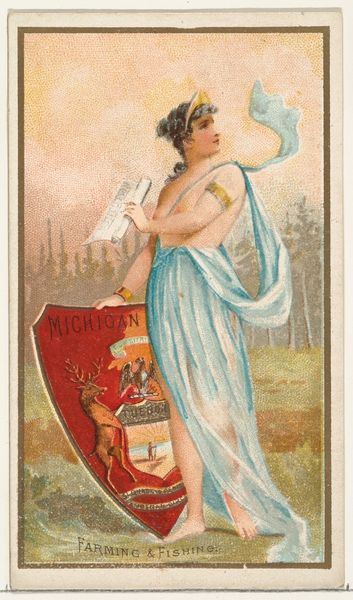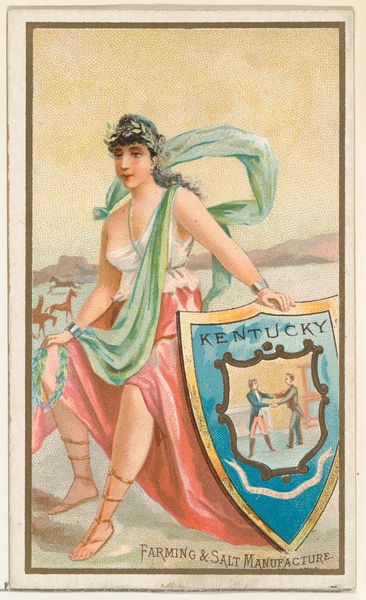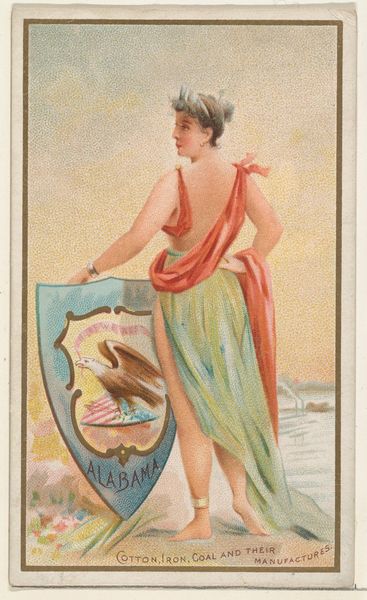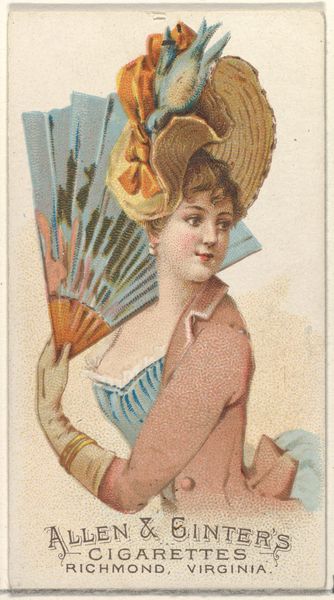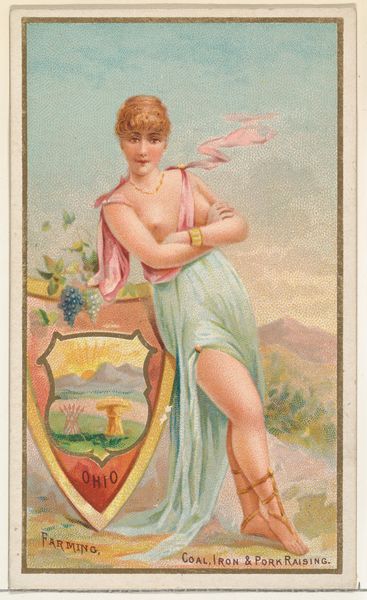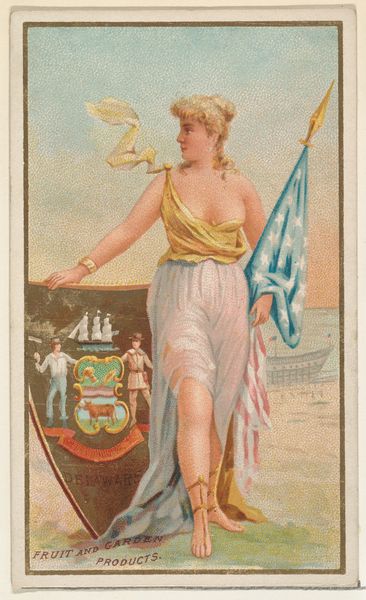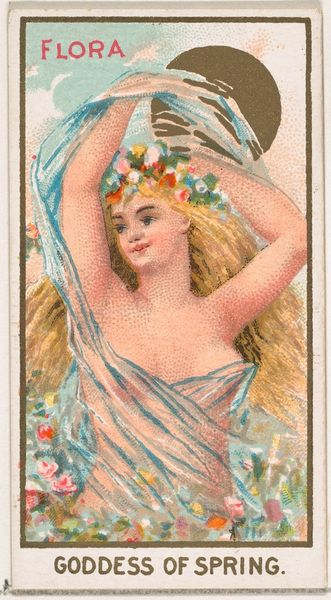
New Jersey, from the Industries of States series (N117) issued by Duke Sons & Co. to promote Honest Long Cut Tobacco 1889
0:00
0:00
drawing, coloured-pencil, print, watercolor
#
portrait
#
drawing
#
coloured-pencil
#
water colours
# print
#
figuration
#
watercolor
#
coloured pencil
#
genre-painting
#
watercolor
Dimensions: Sheet: 4 3/16 × 2 1/2 in. (10.6 × 6.3 cm)
Copyright: Public Domain
Curator: Here we have “New Jersey, from the Industries of States series,” created around 1889 by W. Duke, Sons & Co. It’s a print combining watercolor and colored pencil, currently residing at the Metropolitan Museum of Art. Editor: It has this delicate, almost saccharine quality to it. The pastel colors and idealized figure create an image that feels more like a confectionery box than a celebration of industry. Curator: That's quite perceptive. Consider, though, this image was disseminated by a tobacco company. The alluring figure and heraldic shield depicting New Jersey were intended to associate the state with qualities that would appeal to consumers. Think of it as soft propaganda. Editor: So, it's less about accurate representation and more about image-building? The woman, positioned as a kind of allegorical figure next to the state's coat of arms... the intention here feels almost deceptive, leveraging the visual language of power for commercial ends. Curator: Precisely. Observe how the texture and tonal gradients of the watercolor produce a certain visual depth. The artist emphasizes the soft, appealing quality of her drapery and complexion. This evokes a mood, constructing the narrative they wished to convey, with only a loose relationship to the material conditions in New Jersey at that time. Editor: The shield becomes an emblem, less representative of the actual state than a blank surface on which the company projects a consumerist fantasy. It’s fascinating how an object as seemingly innocuous as a cigarette card can reveal such complex power dynamics. Curator: The piece serves as a cultural artifact. We see a sliver of 19th-century America where mass production and advertisement start intertwining to shape public perception. Editor: Reflecting on it, the image succeeds as a case study for analyzing historical media as a vehicle for shaping aspiration. I think I was far too quick in overlooking it for its charm. Curator: It highlights that, behind the pleasant veneer, a lot can be unpacked, revealing how institutions strategically employ aesthetic elements.
Comments
No comments
Be the first to comment and join the conversation on the ultimate creative platform.

